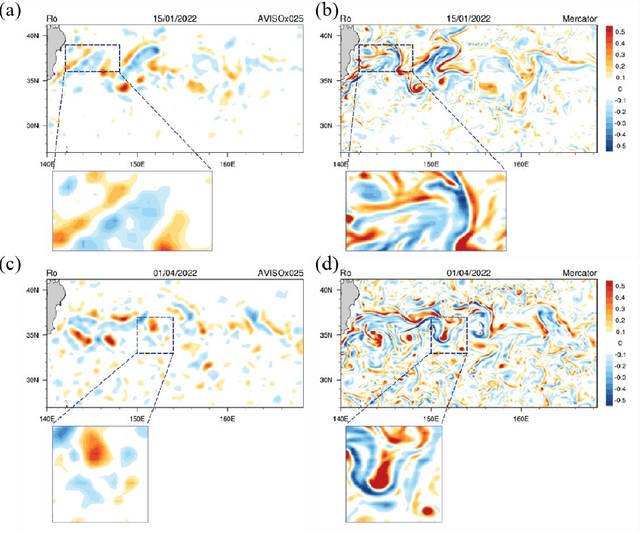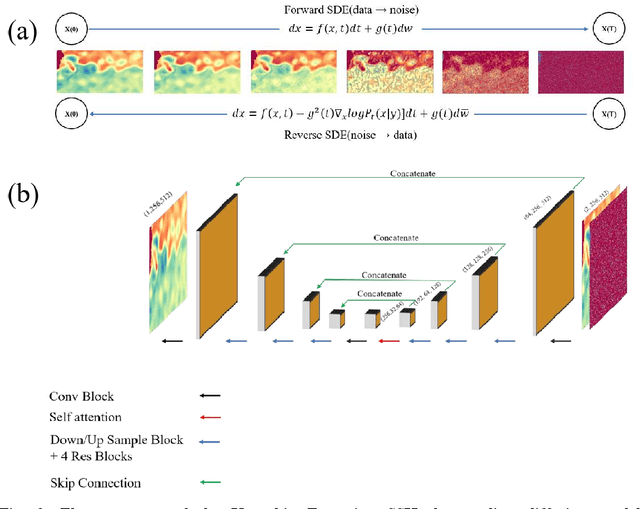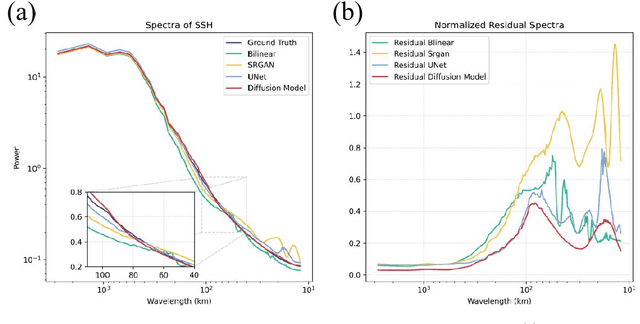Zhijin Li
GE Healthcare
Generative Diffusion Model-based Downscaling of Observed Sea Surface Height over Kuroshio Extension since 2000
Aug 22, 2024



Abstract:Satellite altimetry has been widely utilized to monitor global sea surface dynamics, enabling investigation of upper ocean variability from basin-scale to localized eddy ranges. However, the sparse spatial resolution of observational altimetry limits our understanding of oceanic submesoscale variability, prevalent at horizontal scales below 0.25o resolution. Here, we introduce a state-of-the-art generative diffusion model to train high-resolution sea surface height (SSH) reanalysis data and demonstrate its advantage in observational SSH downscaling over the eddy-rich Kuroshio Extension region. The diffusion-based model effectively downscales raw satellite-interpolated data from 0.25o resolution to 1/16o, corresponding to approximately 12-km wavelength. This model outperforms other high-resolution reanalysis datasets and neural network-based methods. Also, it successfully reproduces the spatial patterns and power spectra of satellite along-track observations. Our diffusion-based results indicate that eddy kinetic energy at horizontal scales less than 250 km has intensified significantly since 2004 in the Kuroshio Extension region. These findings underscore the great potential of deep learning in reconstructing satellite altimetry and enhancing our understanding of ocean dynamics at eddy scales.
Lesion detection in contrast enhanced spectral mammography
Jul 20, 2022Abstract:Background \& purpose: The recent emergence of neural networks models for the analysis of breast images has been a breakthrough in computer aided diagnostic. This approach was not yet developed in Contrast Enhanced Spectral Mammography (CESM) where access to large databases is complex. This work proposes a deep-learning-based Computer Aided Diagnostic development for CESM recombined images able to detect lesions and classify cases. Material \& methods: A large CESM diagnostic dataset with biopsy-proven lesions was collected from various hospitals and different acquisition systems. The annotated data were split on a patient level for the training (55%), validation (15%) and test (30%) of a deep neural network with a state-of-the-art detection architecture. Free Receiver Operating Characteristic (FROC) was used to evaluate the model for the detection of 1) all lesions, 2) biopsied lesions and 3) malignant lesions. ROC curve was used to evaluate breast cancer classification. The metrics were finally compared to clinical results. Results: For the evaluation of the malignant lesion detection, at high sensitivity (Se>0.95), the false positive rate was at 0.61 per image. For the classification of malignant cases, the model reached an Area Under the Curve (AUC) in the range of clinical CESM diagnostic results. Conclusion: This CAD is the first development of a lesion detection and classification model for CESM images. Trained on a large dataset, it has the potential to be used for helping the management of biopsy decision and for helping the radiologist detecting complex lesions that could modify the clinical treatment.
 Add to Chrome
Add to Chrome Add to Firefox
Add to Firefox Add to Edge
Add to Edge